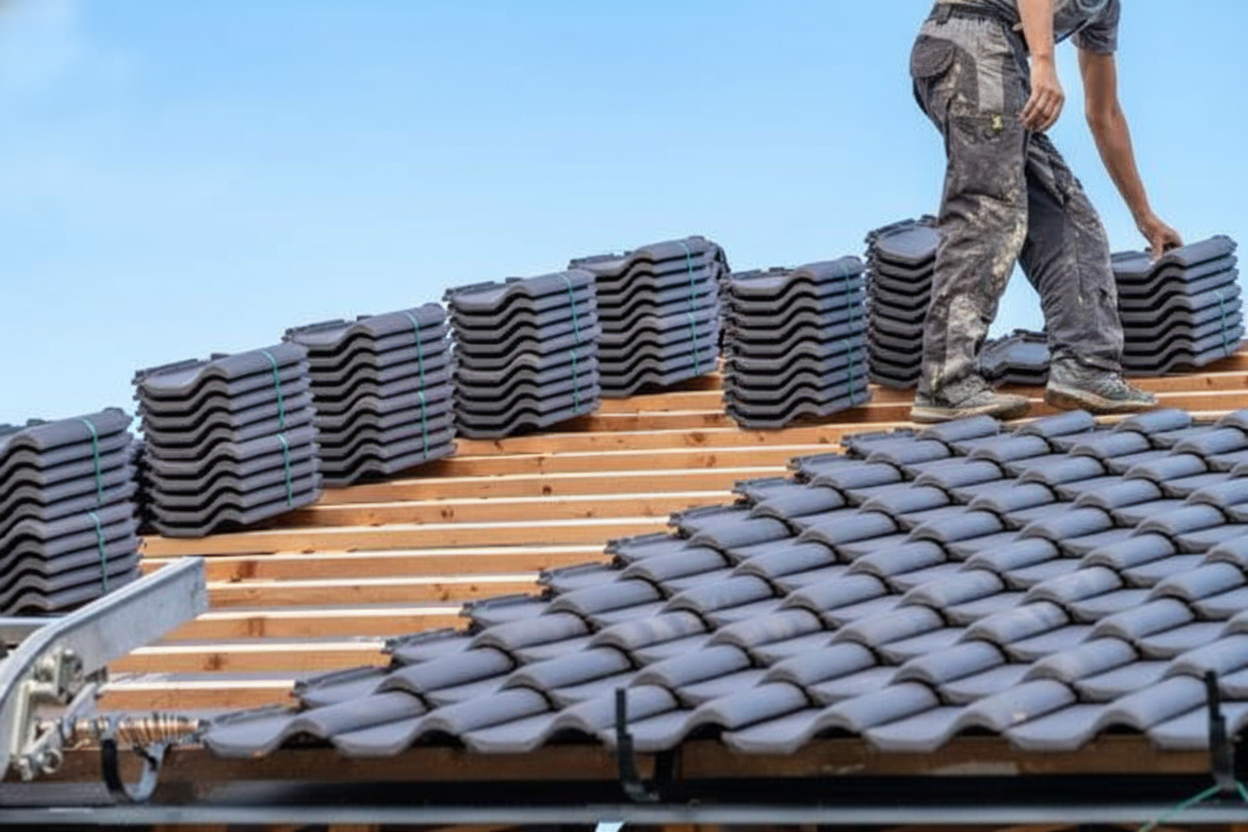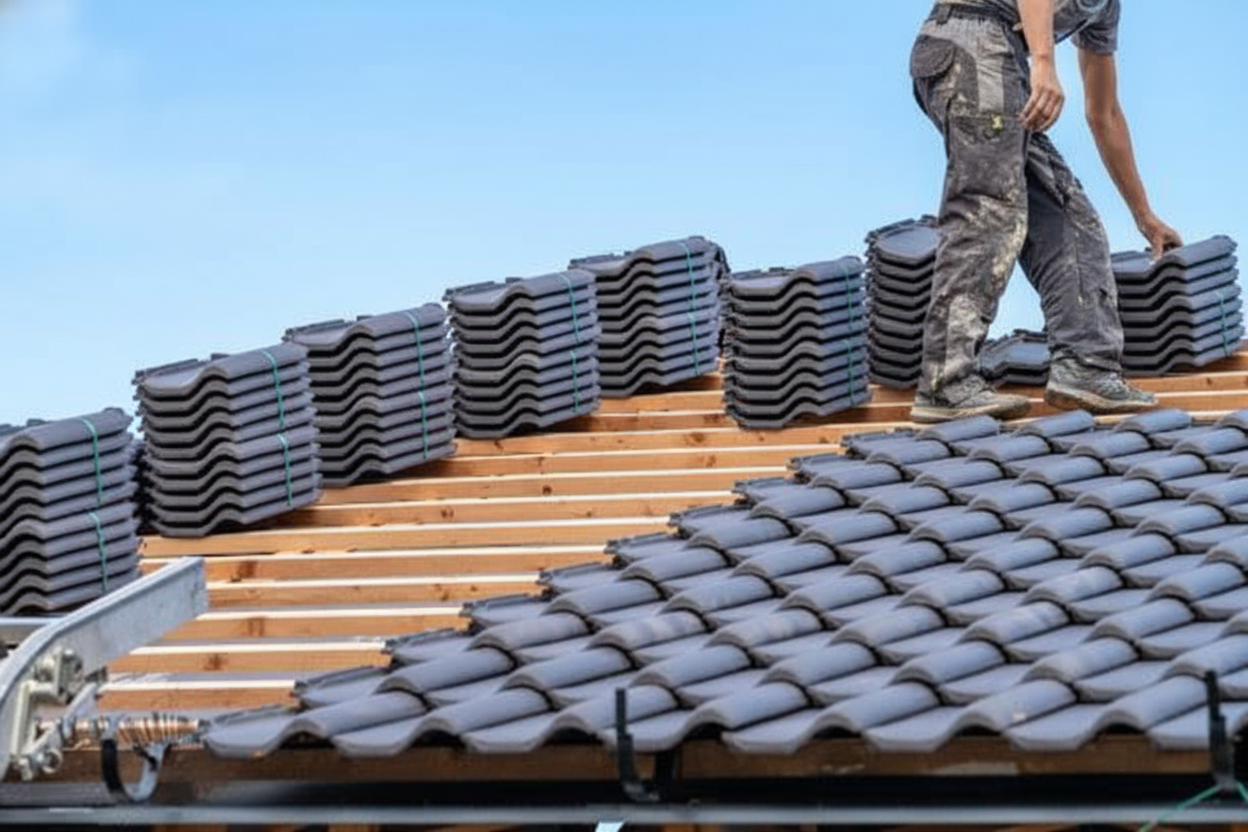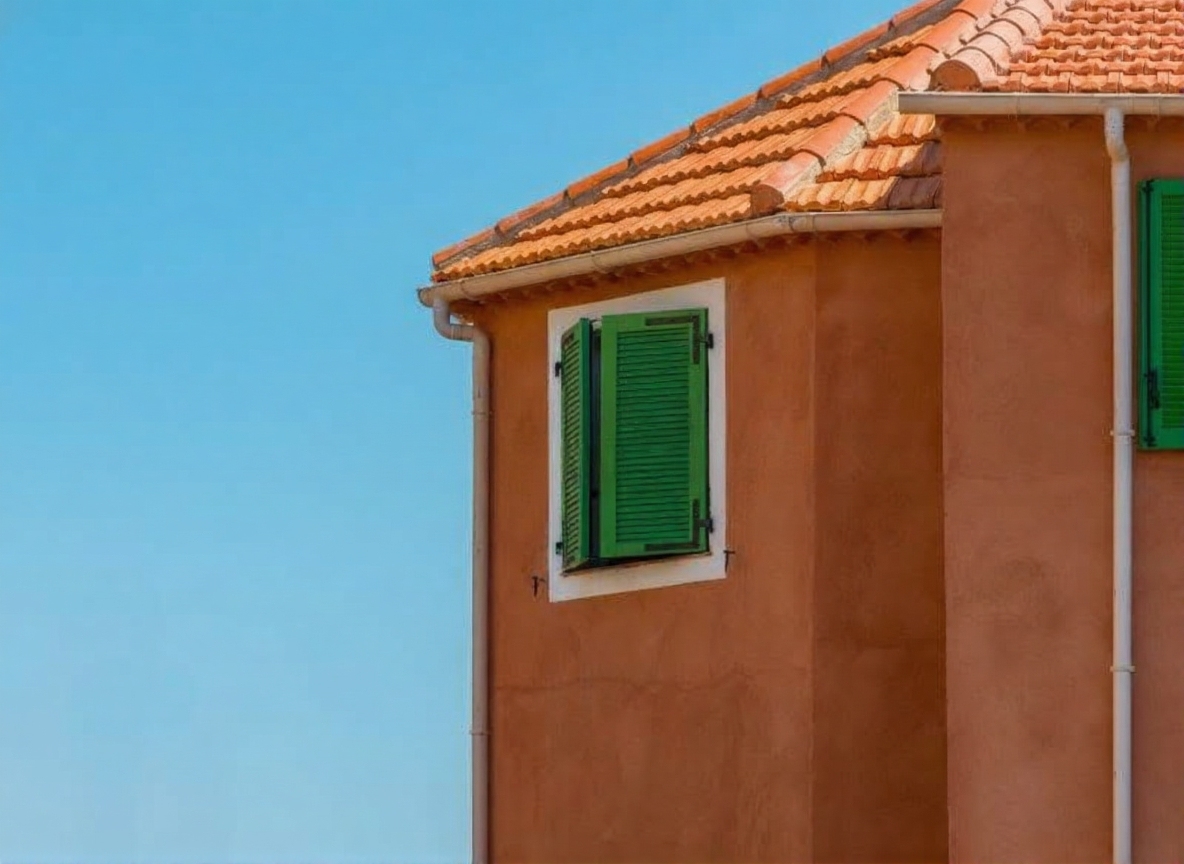
Terracotta Tile Roof Guide: Benefits, Costs & Installation Tips 2025
Maintenance & Repair
Tile Roofing Installation
November 9,2025
Terracotta Tile Roof Guide: Benefits, Costs & Installation Tips 2025

Alt text: Professional roofers installing terracotta tiles on residential home under clear blue sky
Choosing the right roofing material can feel overwhelming when you want something that looks beautiful and lasts for decades. Terracotta tiles offer a winning combination of timeless elegance and exceptional durability that has stood the test of time for centuries.
If you are considering terracotta tiles for your home, you likely want to understand what makes them special and whether they fit your budget and climate. This guide walks you through everything you need to know about terracotta tile roofs, from their natural benefits to important installation considerations.
Terracotta tile roofs can last 50 to 100 years when properly installed and maintained, making them one of the longest-lasting roofing options available today.
What makes terracotta tile roofs unique
Terracotta tiles are made from natural clay that gets molded into traditional shapes and fired in kilns at high temperatures. This process creates their distinctive reddish-orange color and incredibly hard surface. Unlike synthetic materials, terracotta contains no chemicals and comes straight from the earth.
The manufacturing process gives terracotta its signature characteristics. The clay composition allows for excellent thermal properties, while the firing process creates a dense, water-resistant surface. You can find terracotta tiles in various profiles including barrel, flat, and interlocking designs.
Terracotta tiles are fired at temperatures exceeding 2000°F, creating a surface harder than most synthetic roofing materials.
How terracotta compares to other materials
When weighing your options, understanding how terracotta stacks up against alternatives helps you make an informed choice. Here is a quick comparison:
| Material | Lifespan | Weight | Energy Efficiency | Maintenance |
|---|---|---|---|---|
| Terracotta | 50-100 years | Medium | Excellent | Low |
| Asphalt Shingles | 20-30 years | Light | Fair | Medium |
| Metal | 40-70 years | Light | Good | Low |
| Concrete Tile | 40-50 years | Heavy | Good | Medium |
Terracotta outperforms asphalt shingles in nearly every category, offering triple the lifespan with superior energy efficiency. While metal roofs provide good durability, they lack the traditional charm and thermal performance of terracotta. Concrete tiles come close but weigh more and do not handle heat as effectively.
For Florida homeowners specifically, comparing tile versus shingle roofs reveals why terracotta performs exceptionally well in humid, hurricane-prone climates.
Key benefits and considerations of terracotta tiles
Terracotta tiles deliver advantages that go beyond their attractive appearance. Understanding these benefits helps you see the full value of this investment.
Exceptional durability and longevity
Terracotta tiles withstand harsh weather conditions including intense sun, heavy rain, and strong winds. The natural clay composition resists cracking and maintains its integrity through temperature fluctuations. When you invest in terracotta, you are choosing a roof that your grandchildren might inherit.
The material does not rot, warp, or deteriorate like organic materials. It stands up to salt air in coastal areas and handles freeze-thaw cycles in cooler regions. This resilience means fewer repairs and replacements over the decades. Learning about factors that affect tile roof lifespan can help you maximize your investment.
Superior energy efficiency
The thermal mass of terracotta creates a natural temperature buffer for your home. During hot summer days, the tiles absorb heat slowly and release it gradually, keeping your interior cooler. In winter, this same property helps retain warmth inside.
This energy efficiency translates to lower utility bills month after month. Your HVAC system works less hard to maintain comfortable temperatures, which extends its lifespan and reduces maintenance costs. The environmental benefits add up too, as you consume less energy for heating and cooling.
Homeowners with terracotta tile roofs can save 20-30% on cooling costs compared to traditional asphalt shingle roofs.
Timeless aesthetic appeal
Few roofing materials match the classic beauty of terracotta tiles. Their warm, earthy tones complement Mediterranean, Spanish, and Southwestern architecture naturally. The material also works beautifully with modern designs when you want to add character and texture.
Terracotta tiles come in multiple shapes and finishes, letting you customize the look. Whether you prefer traditional curved barrel tiles or sleek flat profiles, you can find options that match your vision. The natural color variations in each tile create visual interest that synthetic materials cannot replicate.
If you want to explore different options, checking out various types of tile roofs helps you understand what works best for your architectural style.

Alt text: Satisfied homeowner inspecting quality terracotta tile roof on Mediterranean style home
Low maintenance requirements
Terracotta tiles need minimal upkeep compared to other roofing materials. Their smooth, fired surface resists moss and algae growth naturally. Water runs off effectively, preventing moisture problems that plague other roof types.
You should still schedule periodic inspections to check for any damaged tiles or debris buildup. However, proper tile roof cleaning typically requires less frequent intervention than asphalt or wood roofing. The material itself does not need treatments, coatings, or special products to maintain its performance.
Environmentally friendly choice
Terracotta tiles offer sustainability from production through disposal. The natural clay requires no synthetic chemicals or petroleum products. Manufacturing has relatively low environmental impact compared to asphalt shingles or synthetic materials.
At the end of their long service life, terracotta tiles are fully recyclable. They can be crushed and used in landscaping, road base, or new ceramic products. This circular lifecycle means your roof does not end up in a landfill.
Fire resistance and safety
Terracotta tiles provide Class A fire rating, the highest available for roofing materials. The clay composition is naturally non-combustible and will not ignite from embers or flames. This protection proves especially valuable in wildfire-prone areas.
The fire resistance can also lower your homeowner insurance premiums in some regions. Insurance companies recognize the reduced risk that terracotta provides. This safety feature protects not just your home but potentially your entire neighborhood during fire events.
Initial investment and costs
Terracotta tiles cost more upfront than asphalt shingles or some other materials. You can expect to invest significantly in both materials and installation. However, this initial expense gets offset by the 50 to 100 year lifespan and energy savings over time.
When you calculate the true cost per year of ownership, terracotta often becomes competitive with cheaper materials that need replacement every 20 to 30 years. Factor in reduced maintenance costs and energy savings to see the complete financial picture.
Structural requirements
Terracotta tiles weigh more than asphalt shingles or metal roofing, though less than concrete tiles. Your home’s structure must support this additional weight safely. Most homes can accommodate terracotta tiles, but older buildings or those with structural issues may need reinforcement.
A professional structural assessment ensures your roof framing can handle the load. This evaluation should happen before you commit to terracotta tiles. Any necessary reinforcement adds to the project cost but ensures long-term safety and performance.
Professional installation matters
Terracotta tile installation requires specialized knowledge and experience. The tiles must be aligned precisely, underlayment installed correctly, and flashing details executed perfectly. Improper installation leads to leaks, breakage, and shortened lifespan.
Working with experienced professionals who understand proper tile roof installation steps protects your investment. Look for contractors with specific terracotta experience and verifiable references. The right installation team makes all the difference in your roof’s performance.
Planning your terracotta tile roof project
When you decide terracotta tiles fit your needs, proper planning ensures a successful project. Start by researching qualified contractors in your area who specialize in tile roofing. Request multiple quotes and check references thoroughly.
Schedule your installation during favorable weather when possible. Spring and fall often provide ideal conditions in most regions. Allow adequate time for the project, as quality tile installation should not be rushed.
Understand the signs that indicate when tile roof repair might be needed so you can maintain your investment properly after installation. Regular inspections catch small issues before they become major problems.
Budget not just for the initial installation but also for proper underlayment and flashing. These components play crucial roles in your roof’s long-term performance. Cutting corners on these elements undermines the benefits of premium terracotta tiles.
If you notice any damage over time, knowing how to repair cracked roof tiles helps you address issues quickly. Additionally, understanding proper techniques for walking on tile roofs prevents accidental damage during maintenance.
